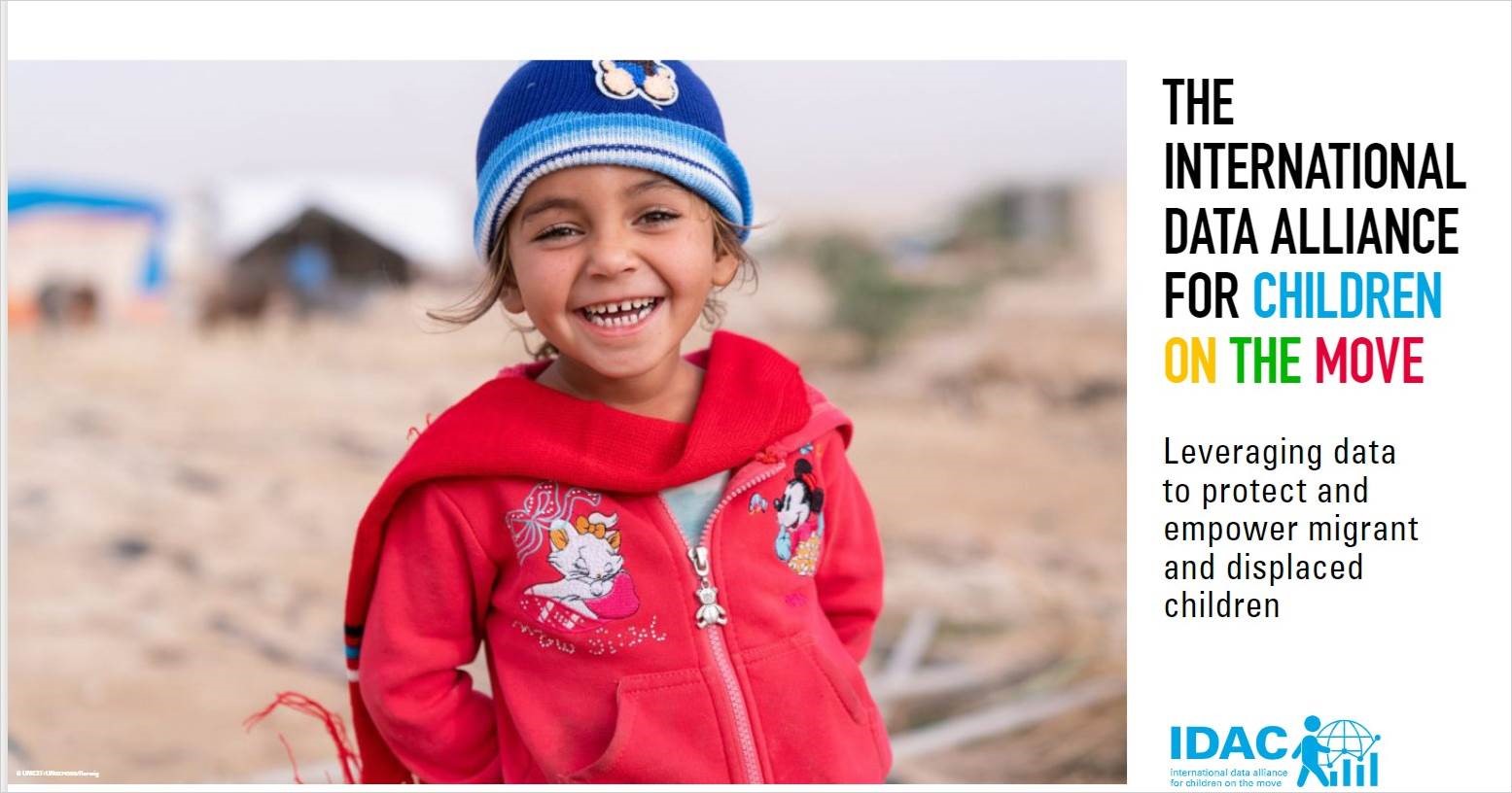In 2020, there were an estimated 36 million international child migrants globally -- the largest number ever recorded. Of those who have been forcefully displaced within or across borders, two in five are children. These children often live precarious lives, many experiencing serious violations of their rights. But pervasive data gaps exacerbate their deprivations and leave many of these children unprotected. The International Data Alliance for Children on the Move was formed to improve statistics and data on migrant and forcibly displaced children and foster innovative solutions to the data challenges, ensuring no child is left behind.
How well does the current data landscape reflect the lives of children on the move?
The real scale of migration and displacement among children remains unknown. Evidence reflecting even the most basic details about children on the move is limited:
- Four in 10 countries reporting on refugees do not provide reliable data on age
- Almost 9 in 10 countries and territories with conflict-related internal displacement do not disaggregate the data by age
- Three in 10 countries and territories do not have age-disaggregated migrant stock data
The numbers used by the global community are often derived from estimation, which necessarily has to rely on assumptions. That means these numbers are far from complete. Large segments of children’s journeys are missing from the evidence entirely. Data that reflect the life, development and well-being of migrant and displaced children are sparse, including living conditions, safety and protection needs, health conditions, and access to health care and education.
Why must these data gaps be addressed?
Protecting children on the move by closing the data gaps is a shared global responsibility and key to inclusive and sustainable development. As participants of the World Data Forum, we know data play a critical role in implementing the 2030 Agenda and achieving the Sustainable Development Goals. But the needs of many subgroups – particularly children on the move – are being overlooked in data collection efforts at national, regional and international levels. This undermines global efforts for sustainable, inclusive development.
Good quality data available in a timely manner are urgently needed to shine a light on the often harrowing experiences of children who have migrated or been displaced. These children have a right to a nourishing and nurturing environment safe from harm. Data help clarify who and where the most vulnerable children on the move are – and what needs to be done to protect their well-being. Effective policymaking and targeted resource allocation that protect all vulnerable children, no matter their migratory status, hinge on the availability of good data.
What is the International Data Alliance for Children on the Move?
The International Data Alliance for Children on the Move (IDAC) was formed in 2020 to drive evidence that reflects the experiences of migrant and displaced children and informs policymaking and programming. A cross-sectoral, global coalition, IDAC brings Member States, international and regional organizations, NGOs, think tanks, academia and civil society to the table. Guided by a joint Secretariat comprised of Eurostat, IOM, OECD, UNHCR and UNICEF (Chair), IDAC members are united by a common purpose: to end the invisibility of children on the move.
What does IDAC do?
IDAC provides an open platform for the statistical community to forge and fortify partnerships, pursue data innovations and establish new measures to ensure migrant and displaced children are captured in data work. Our work centres on three main objectives:
- Strengthen national data systems and capacities to protect migrant and forcibly displaced children;
- Promote and establish collaborative, innovative methods for child-specific data work; and
- Improve data visibility, availability, accessibility and usability.
Four IDAC working groups are translating IDAC objectives into concrete activities. The groups will identify challenges related to child-specific migration and displacement data and generate practical solutions in the form of public goods (e.g., publications, guidance materials and services such as capacity-building trainings and strategic partnerships). IDAC recently released an issue brief examining the gendered impacts of COVID-19 on children on the move. A forthcoming info brief will present the most recent available data on migrant and displaced children, while also flagging the serious data gaps and the urgent need for investments and partnerships.
How can I get involved?
IDAC offers a space for voices of governments, international organizations, civil society, academics and think tanks to be heard in equal measure. We are driven by the conviction that only by bringing all concerned stakeholders together and pooling relevant data sources and knowhow can the international community fully comprehend the magnitude of the protection and development needs of migrant and displaced children. With every new member, we are one step closer to building a thriving data ecosystem for children on the move.
Too many children on the move are falling through the cracks – and we welcome the expertise, knowhow and experiences of World Data Forum participants to join our efforts and ensure that every migrant and displaced child is seen, counted and protected.
To become an advocate for children on the move, please contact us at IDAC@unicef.org. Follow us @IdacM to stay up to date on IDAC activities.

